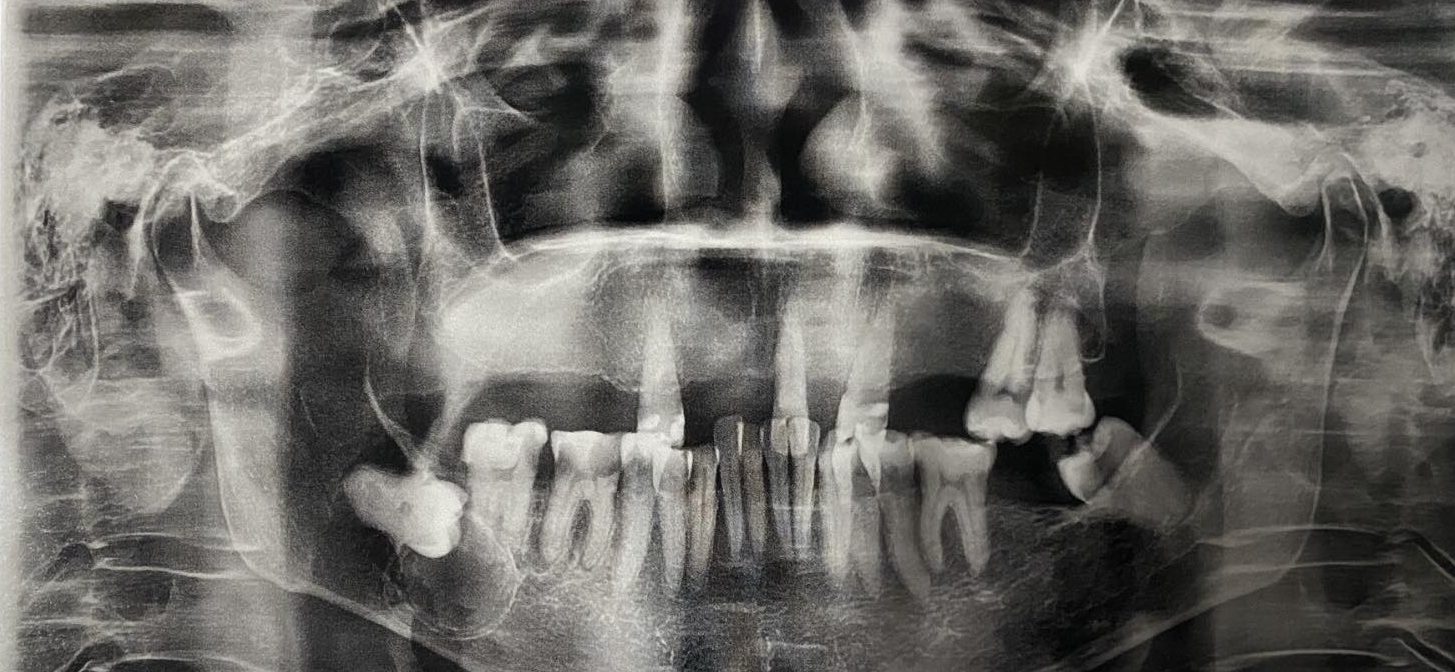“The dentist pulled out the wrong tooth! My canine was hurting, but he pulled out a molar!” When a dear friend messaged me this, my first reaction was let’s sue them! However, the dental student in me objectively requested her dental radiographs taken before the extraction and asked her to relay her dental history. True enough, the dentist didn’t pull out her canine but extracted the molar instead; all because of referred pain.
Referred tooth pain in dentistry or odontogenic referred pain describes pain originating from a decayed tooth, inflamed gums, or other pathogenic diseases in the oral cavity but is perceived in a different location in the mouth or face. In the case of my friend, the offending tooth her molars, but the innervation of all teeth is the same, she could hardly pinpoint which causes the pain.
What is an example of referred tooth pain?
Common examples of referred pain in teeth are the following:
- Offending tooth
Toothache is caused by inflammation or irritation of the pulp—a nerve inside each tooth that essentially gives life to it. That tiny little pulp encased by the hardest bone in your body is what makes your teeth feel the temperature of your food; how hard or soft your food is, and if your bite is in the correct position.
Sure enough, the pulp is small but incredible, but if you think about it, it’s not small at all. In fact, the pulp extends into the roots of your teeth, branching out into a complex network of nerves and blood vessels that support the health and function of the tooth.
When the pulp becomes inflamed or irritated, usually due to decay, trauma, or infection, it can cause significant pain. This pain can sometimes be referred to other areas, making it difficult to pinpoint the exact source of the problem. Proper dental care and regular check-ups are essential to maintain the health of the pulp and prevent toothache.
- Blocked or Inflamed Sinuses
Another example of referred pain in teeth, especially in the maxillary teeth or the teeth in our upper jaw. This referred pain can be confusing because the discomfort is felt in the teeth, even though the actual problem lies in the sinuses.
But how did the sinus problems affect the upper teeth?

To know the answer to this is to study the orofacial anatomy. Here is a panoramic radiograph or panoramic x-ray of what a typical human dentition and its surrounding structures would look like as a whole:
The hollow circles sitting right on top of the roots of your tip are your sinuses. Although radiographs are only two-dimensional representations of what it looks like inside of your body, you can see how close the tips of your teeth’s roots are to the borders of your nasal sinuses. Hence, if there is inflammation, infection, or even a common cold in your nasal sinuses, you can most probably feel the pain.
Common symptoms of sinus-related tooth pain include:
- Pain in the upper teeth (which almost always worsens with sudden movements or bending over)
- Pain felt in multiple teeth and not just in one specific tooth
- Nasal congestion, facial pressure, headache, or a reduced sense of smell
- TMJ Problems
Temporomandibular Joint (TMJ) problems can also lead to referred pain in the teeth. The TMJ is the joint that connects your jaw to the temporal bones of your skull, allowing you to move your jaw up and down and side to side, so you can talk, chew, and yawn. When there are issues with the TMJ, it can cause pain and dysfunction in the jaw joint and the muscles that control jaw movement causing Temporomandibular Disorder or TMD.
Symptoms of TMD can include:
- Pain or tenderness in the jaw
- Pain in one or both of the temporomandibular joints
- Aching pain around the ear
- Difficulty or discomfort while chewing
- Aching facial pain
- Locking of the joint, making it difficult to open or close your mouth
Referred pain from TMD can be felt in the teeth, making it seem like you have a toothache when the problem is actually with the TMJ. This pain can be due to muscle tension, inflammation, or stress on the joint. In some cases, the pain might be misinterpreted by the brain as originating from the teeth because of the close proximity and shared nerve pathways.
- Trigeminal Neuralgia
Trigeminal neuralgia is one of the most painful and debilitating orofacial conditions that anyone can experience (Abd-Elsayed A, 2021), and this can lead to referred pain because the trigeminal nerve, which is responsible for sensation in the face, mouth, and teeth, can misinterpret signals or transmit pain to areas beyond its primary region of irritation.
To understand how referred tooth pain is felt if you have trigeminal neuralgia, we should look into the anatomy of the trigeminal nerve.
Trigeminal Nerve Anatomy
The trigeminal nerve (cranial nerve V) has three main branches:
- Ophthalmic (V1) – provides sensation to the forehead, scalp, and upper eyelids.
- Maxillary (V2) – provides sensation to the cheek, upper lip, upper teeth, and nasal cavity.
- Mandibular (V3) – provides sensation to the lower lip, lower teeth, chin, and parts of the ear.
If your trigeminal nerve is damaged, it would most probably illicit referred tooth pain because of how it innervates the entirety of our face.
Can tooth extraction cause referred pain?
Yes, tooth extraction can cause referred pain. Tooth extraction alone is a painful procedure, and if complications occurred during the procedure, there is an increased chance of actually feeling pain in a different site except from that of the extraction site.
These are the mechanisms of referred pain or how such phenomena occur:
Mechanism of Referred Pain After Tooth Extraction
Inflammation and Healing:
After tooth extraction, the surrounding tissues, including nerves, gums, and bone, undergo inflammation and healing. This inflammatory process can irritate nearby nerves, leading to pain that is felt in areas other than the extraction site.
Nerve Involvement:
The nerves affected by the extraction can send pain signals that the brain misinterprets as coming from a different location. This is due to the complex network of nerves in the oral and facial regions. For example, if a lower molar is extracted, the mandibular nerve may be irritated, leading to pain perceived in other lower teeth, the jaw, or even the ear.
Muscle Spasms:
The trauma of extraction can cause muscle spasms in the jaw, leading to referred pain in the face, head, or neck. The masticatory muscles (those involved in chewing) are closely connected with the nerves of the teeth, and spasms in these muscles can refer pain to different areas.
Phantom Tooth Pain:
In some cases, patients might experience phantom tooth pain (similar to phantom limb pain), where the brain continues to send pain signals from the area where the tooth used to be, even though the tooth is no longer there.
This condition is usually felt by patients who have recently undergone a root canal treatment (Murbach, JJ et. al., 1982). The usual complaint that patients raise is how the root canal-treated tooth is still painful, even if that would be anatomically impossible since the pulp of that certain tooth that would emit the painful stimuli has already been removed.
Common Areas for Referred Pain
- Adjacent Teeth: Pain might be felt in the teeth next to the extraction site.
- Opposite Jaw: Pain can sometimes be referred to the teeth or jaw on the opposite side.
- Ear: Especially with lower molar extractions, pain can be referred to the ear due to shared nerve pathways.
- Head and Neck: Muscle tension and nerve irritation can lead to headaches or neck pain.
How can I get immediate relief from tooth pain?
You can get immediate relief from pain by taking pain relievers such as paracetamol or NSAIDs (SWC Koh, 2019). However, drugs may not be immediate as it will take some time, around 30 minutes to an hour before they take effect.
Pain relievers, however, are just made to relieve you from the pain you are feeling. It is not intended to solve the root cause of why you are in pain. You still need to consult a dentist and go through a series of tests to confirm your condition and tailor a treatment plan that best suits your condition.
What is the best pain reliever for a toothache?
The best pain reliever for toothache is the pain reliever that you have always been using whenever you are in pain, whether it is for the headache that you are feeling or when you experience muscle pain.
When you are experiencing dental pain, your dentist would instinctively ask what medicines do you usually take when you are in pain. From then they will deduce the medicine and the dose which will be very helpful to ease the pain, but he or she would most definitely ask you to go through other diagnostic tests to confirm what’s causing it.
In conclusion
Being in pain alone is miserable, but not knowing what causing the pain is a completely different form of hell. This might sound cliche, but you have to consult your dentist to help explain and ease your pain.
References:
Abd-Elsayed A. Trigeminal Nerve Pain: A Guide to Clinical Management. 1st ed. Springer International Publishing; 2021.
Koh SWC, Li CF, Loh JSP, Wong ML, Loh VWK. Managing tooth pain in general practice. Singapore Med J. 2019 May;60(5):413. doi: 10.11622/smedj.2019044. PMID: 31187144; PMCID: PMC6535452.
Marbach JJ, Hulbrock J, Hohn C, Segal AG. Incidence of phantom tooth pain: an atypical facial neuralgia. Oral Surg Oral Med Oral Pathol. 1982;53:190–193.





hi!,I really like your writing so so much! share we communicate extra approximately your article on AOL? I require a specialist in this house to unravel my problem. May be that’s you! Having a look ahead to peer you.
[…] failed dental procedures, including poorly performed restorations or complications during root canal therapy, can contribute to infection. Pulpal necrosis, or the death of the tooth’s pulp tissue due to […]